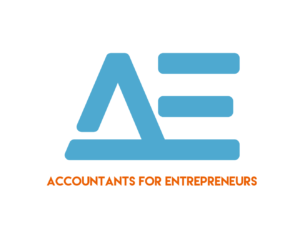
Things have been hard for small businesses during the Covid 19 pandemic. Though the Covid 19 vaccine is in sight, hope comes in the form of the revived Paycheck Protection Program (PPP) for a lot of small business owners. This $137 billion program is set to fund forgivable “second-draw” loans as part of a relief package. It was signed into law on Dec. 27 to help private individuals and businesses deal with current economic difficulties.
In essence, the second loan is available to you as an option in case the first loan wasn’t enough. Businesses, however, will need to show proof of substantial revenue decline in addition to meeting other requirements. The Small Business Administration has reopened the PPP loan program on Jan 11 and will fully re-open the PPP loan portal to all participating lenders on Jan 19, but they are set to close on March 31, 2021.
This PPP loan might be exactly what your business needs, so it is important to understand its requirements and any related information. To help you prepare for the opening of this loan, the accountants at A4E have created this concise guide. With no further ado, here it is:
What are the qualifications?
One thing you need to know is that priority will be given to underserved businesses, such as those owned by people in a minority group, women, and veterans. Only loan applications from community financial institutions will be accepted for the first two days when the PPP loan portal opens.
Beyond that, a business can qualify for the second round of PPP loans if it:
- Has no more than 300 employees (500 employees for first-time loan borrowers)
- Has used up the full amount of the first PPP loan has already been used or has allocated it for future use
- Has experienced a minimum 25% drop in annual gross receipts for any quarter of 2020 compared with the same quarter in 2019
- Has not received a Save Our Stages grant
- Has not permanently closed. Businesses that have temporarily closed or suspended operations can receive a second-draw loan.
This loan is also available to businesses, certain non-profit organizations, self-employed individuals, independent contractors, sole proprietors, housing cooperatives, small agricultural cooperatives, veterans’ organizations, and tribal businesses.
Applicants will need to verify these details with various documents, such as tax forms and bank statements. Make sure to consult your accountant about your financial details, Borrowers seeking $150,000 or less do not need to prove revenue loss when they apply for a second-draw loan, unless they want to apply for loan forgiveness later on.
How much can I expect to receive?
The formula from the first run is still in use. Borrowers can expect to receive up to 2.5 times their average monthly payroll costs, which can be calculated using the data from:
- 12 months prior to the loan
- The calendar year of 2019
- The calendar year of 2020
Businesses that have not been operational for more than 12 months since Feb 15, 2020 will use the total payroll costs divided by the number of months those were paid out. Season businesses will use the average total monthly payroll for any 12-week period between Feb. 15, 2019 and Feb. 15, 2020.
The maximum amount for second draw PPP loans, however, is just at $2 million. First-time PPP loans were given a maximum of $10 million.
Rules are a little different for accommodation and food service industries, be sure to check out the guideline or to consult with your accountant if your business is in this sector.
How can I use this money?
The disbursement from your second-draw loan can only be used on covered costs, such as:
- Payroll costs including paid sick leave and group insurance benefits provided by the employer
- Operating costs, including mortgage payments, rent, utilities, software, human resources, and accounting needs
- Property damage sustained during disturbances in 2020 not covered by insurance
- PPEs and modifications made to meet safety requirements.
Tax Deductible
Funds paid by the PPP loan is fully tax deductible and the forgiveness amount of the loan doesn’t count toward your taxable income.
Full Forgiveness With EIDL Grant
If you have applied and received the EIDL advance grant, the amount will not count against your PPP loan forgiveness.
Final thoughts
These programs exist to ensure that every American business has the capacity to survive the adverse economic conditions brought about by the pandemic. They are there to ensure that Americans and their employees are capable of providing for themselves during these difficult times. Make sure to speak to your lender about this opportunity, especially since these loans are forgivable down the line.
If you need to consult an accountant in Boston, MA about this program, send us a message. We can make this process easier for you and help your business find the government help it needs to stay afloat.
